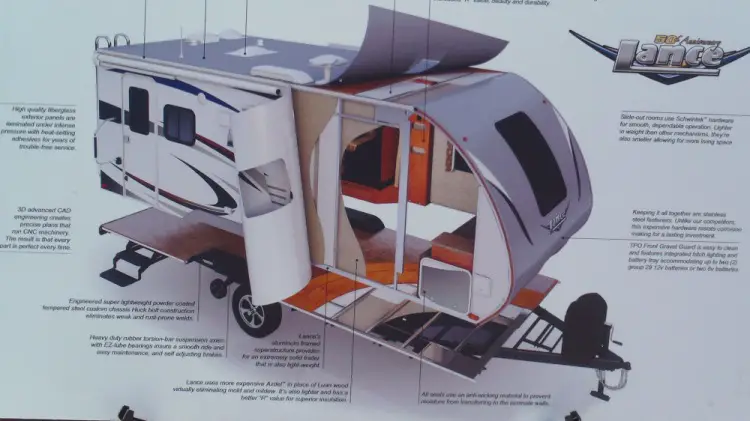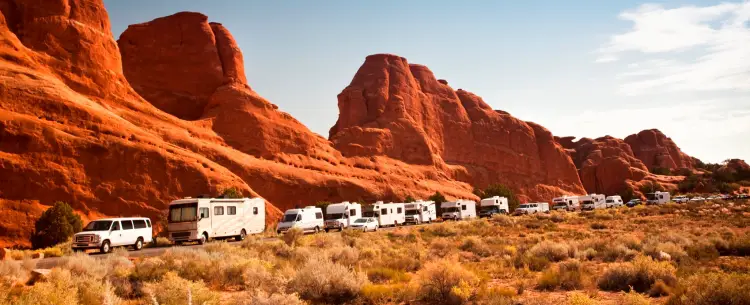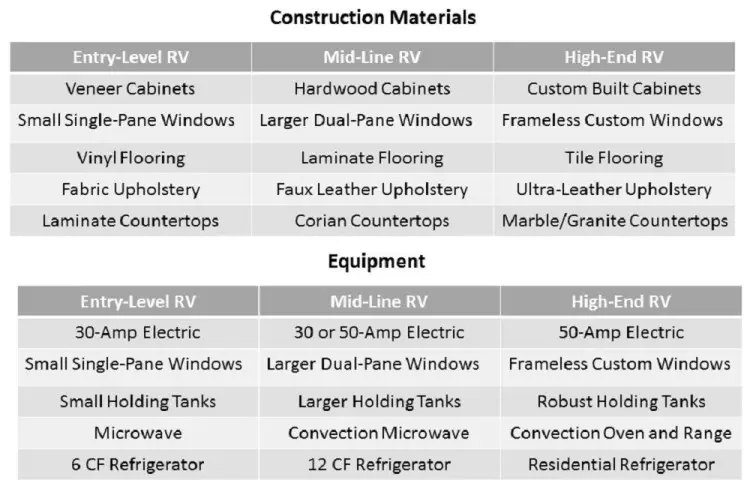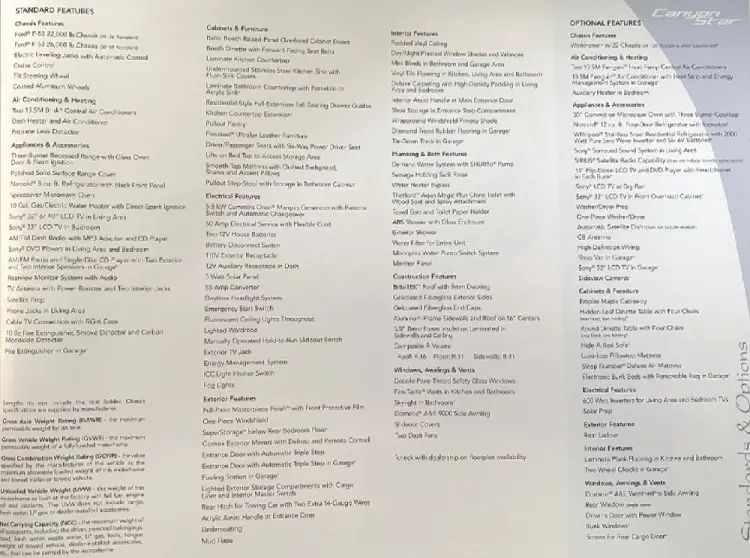In this day and age, it is more difficult to know if you are purchasing a quality RV. Long gone are the days when you knew by the name, brand or reputation of a particular RV manufacturer that you were in fact buying a quality-built RV. Don’t get me wrong, there still are RV manufacturers with stellar reputations and quality products, but with all the acquisitions and consolidation it is more difficult to tell who-is-who in the RV industry.
The purpose of this article is to help you understand more about the RV industry in general, and offer you some guidance, suggestions, and pointers so you can make educated RV buying decisions and purchase a quality RV.
Everybody is Different
One of the most important things to understand early on in the RV buying process is, everyone is different. RV buyers have different tastes, different likes, different dislikes and different budgets. This is why RV manufacturers build so many different types of RVs, at different price-points. The way I explain it is, you can purchase an entry-level RV, a mid-line RV or a high-end RV. I like to compare it to automobiles, you can buy a Chevy, a Buick, or a Cadillac. There is nothing wrong with a Chevy, but if you buy a Chevy don’t expect to get a Cadillac. You get what you pay for, but on the flip-side, buying a Chevy doesn’t mean workmanship and quality should be compromised.
The take-away here is:
-
-
- If you buy a Chevy you get a Chevy.
- Workmanship and quality should never be compromised, regardless of the brand.
-
Now we can look at some differences between entry-level, mid-line and high-end units as it applies to pricing. The difference in pricing is typically in the construction materials and equipment used in building the RV. For example, an entry-level unit might be constructed using wood framing and corrugated aluminum siding, versus aluminum framing and fiberglass siding in a mid-line unit. The wood framed entry-level unit is less expensive to build, so the price of the RV is lower.
The list of comparisons between the different levels can be quite lengthy, so I will just highlight a few examples to make my point.
This is the short list, but it helps distinguish some of the typical differences in construction and equipment that goes into the various levels of RVs. This is very similar to the automobile industry too. You can purchase a car with fabric upholstery, manual roll-up windows and a 4-cylinder engine, or you can purchase a car with all leather interior, power seats and windows and a V8 engine.
Standard Equipment Versus Optional Equipment
The next thing I think is important to understand about RV pricing is standard equipment and optional equipment, and how RV dealers order units. When a dealer orders a unit there is a list of standard equipment that comes on the RV from the manufacturer. This equipment is included in the base price of the unit. A short list of standard equipment, for the sake of an example, would be: an air conditioner, television, dinette booth, patio awning and 4,000-watt generator. Let’s say this RV (with all standard equipment) costs the dealer $13,000. There is also a list of optional equipment the dealer can add to the unit, which makes the RV more appealing, but increases the cost. A short list of these examples might be to increase the air conditioner BTUs from 11k to 15k, two televisions rather than one, a table with chairs as opposed to a dinette booth, a 12-volt power awning with led lighting and a 5,000-watt generator rather than 4,000-watts. Now, the dealer cost increases to $15,000. Experienced RV dealers know what RVs to order with standard equipment and what options to add to other units to increase sales. This is very similar to automobiles too. When you buy a new car off of the lot you probably noticed it had some of the options you wanted, but was missing other options you wish it had.
The take-away here is:
-
- An RV with only standard equipment is less expensive, and the components that go into building the RV are less expensive too.
- You will probably never find an RV on a dealer’s lot equipped with all the options you want. You would need to order the RV equipped how you want it, and wait for it to be built and delivered.
- The RV dealer purchases units from the manufacturer with the options they think customers want, while keeping the cost at a level they think customers will pay.
Another important consideration is, the majority of RV manufacturers purchase all the parts and pieces necessary to build the RV from other vendors and suppliers, while seeking the best price as well. Unfortunately, this can translate into lower quality products going into RVs, especially on lower priced units. This may not sound acceptable, but it is the way of modern-day manufacturing. The same thing occurs in other industries too, like houses, boats and automobiles. It doesn’t make it right, but that is how things are done in today’s marketplace.
So, when you buy an entry level RV it’s important to understand; for the manufacturer to keep the price affordable, the components used in the manufacturing process are not the same components found in a high-end RV. One example I used earlier (to illustrate the point) is a wood framed RV with a corrugated aluminum exterior, versus an aluminum framed RV with a gel-coat fiberglass exterior. The wood framed RV with aluminum siding costs less to manufacture than the aluminum framed hard-sided RV. This applies to almost everything you can and cannot see on the finished product.
RV Quality & Workmanship
Now that you have a basic understanding of RV pricing, let’s talk about quality and workmanship. The RV you purchase might be an entry-level unit, but as I said earlier, that does not mean quality and workmanship should be compromised.
This is what I really want to discuss, how to avoid buying an inferior quality RV.
I walk-through and look at hundreds of RVs every year, and I experience quality workmanship and poor workmanship firsthand. A good example of this is when I was installing a base-plate on a friend’s tow vehicle, and preparing their new motorhome to tow the vehicle. The motorhome in question is what I consider an entry level RV. The price-point is more affordable than a mid-line unit, and is intended to bring new buyers into the RV marketplace. As I worked on the RV, I was alarmed by the fit and finish work I saw. By fit and finish I am referring to the finished construction and trim work on the RV. Think of it in terms of your house; after the walls and windows are installed, the dry-wall is installed and a finish carpenter comes in to install all the molding, baseboards and trim work. If the finish carpenter is good at his or her craft you are impressed with the finished product. On the other hand, if there are noticeable gaps, and molding that isn’t straight you are quick to notice the poor quality and workmanship. I immediately noticed the poor workmanship on my friend’s RV, which lead me to look even closer. I discovered other (more serious) construction and quality issues on the RV and pointed it out to the owners so they can have the repairs made under the RV’s warranty. I felt bad that my friends spent their hard-earned money on an RV with so many defects. These problems should never make it past the assembly line, and what makes it worse is the selling dealer didn’t discover and repair the defects during the pre-delivery inspection process.
So, how do you avoid this from happening to you?
When I was in the Army, I was in charge of some large fleet maintenance operations. To bring a facility up to my standards, I used the old philosophy you inspect what you expect. At every duty-assignment I had, I started a small quality control team (who worked directly for me) and had them randomly inspect vehicles that just completed a semi-annual or annual service in the unit motor pools. It didn’t take long for the Motor Sergeants to realize poor quality work can result in poor evaluation reports from me. The condition of the equipment improved overnight, every time.
Unfortunately, quality control at some RV manufacturing plants is lacking. This is poor management. Units come off the assembly line with quality and workmanship issues, and if the dealership doesn’t correct the problems, you buy the RV and it becomes your problem.
To prevent this from happening to you, you must be the quality control inspector before the sale. If you are not familiar with RVs, construction techniques and workmanship (like my friends who bought the motorhome) consider hiring an RV inspector to go through the unit before you buy it. If you are comfortable with the title of “quality control inspector” here are some things you should do.
What to Inspect & Look for when Buying RV
The first step is to research, research & research. If you are interested in a particular brand or model do your due diligence. If possible, you can take a plant tour and witness how the unit is built firsthand. If that is not feasible request brochures from the dealer or manufacturer, and do your research on the internet. Go to RV owner forums on the Internet where people with the same type, brand and model of RV you are interested in openly discuss their RVs. When people have a bad RV or RV buying experience, they are quick to vent. You can get lots of valuable information at these forums at no cost to you.
Attend local RV shows to check out some of the local RV dealer’s in your area. This is a good place to do some comparison shopping, and it’s a good place to run into, and talk to current or past owners of certain products. Something else to be aware of is, RV manufacturers send representatives to RV shows to help dealers who sell their products. So, RV shows are a great place to talk directly with RV manufacturer representatives about a particular brand or model RV you might be interested in.
Research the RV dealer you plan to buy from. Are they reputable? How long have they been in business? Do they have a nice facility with a good selection of RVs to look at? Do they have a good selection of parts & accessories? Do they have an organized service department with certified RV technicians? Is the sales staff educated and well-versed on the products they sell, or are they more like used car salespeople?
After you identify the RV you are interested in, spend time looking at all the fit and finish work on the interior and exterior of the RV. If the work is poor quality where it is easy to see, imagine what the construction looks like where you can’t see it.
If it passes the fit and finish test, look into the construction materials and techniques used in building the RV. I learned years ago, if a manufacturer builds a quality product, they want you to know about it. They will highlight the construction materials and construction techniques in all of their literature, and they will train the dealers who sell their products about the quality that goes into their RVs. So, if you are looking at a particular brand and there is little or no information available on its construction, and/or the salespeople are not excited or knowledgeable to discuss the quality of the product, BUYER BEWARE!
After a thorough inspection of the RV; is what you discovered during the inspection simple flaws in the construction process, or poor quality and workmanship? Lots of times RVs are sold with a problem that is nothing more than a flaw in the construction process, or an oversight by an employee during the assembly process. RV dealers perform pre-delivery inspections on RVs and usually identify and repair any flaws they discover. Other times, a problem might exist across an entire line of RVs. For example, when a manufacturer builds a travel trailer, they purchase the frame, suspension, axles, brakes and tires from other vendors. It’s possible for an entire run of trailer frames, or a component used on the frame, to be faulty. This typically results in a recall. Was this the fault of the trailer manufacturer? No, but it was installed on their product. It’s unfortunate, but things like this happen from time to time. When a manufacturer or supplier takes the steps required to correct a problem they are standing behind the product. It is inconvenient for the consumer, but considered fair in the scheme of things.
Go through the product brochures to see what standard equipment is on the RV you are interested in. Look at the BTU’s for the furnace and air conditioner. Is it enough to heat and cool the RV? Is the air conditioner ducted throughout the RV, or is it a free-delivery unit? Look at the size of the holding tanks on the RV. Are they large enough to accommodate the number of campers staying in the RV, and for the type of camping you plan to do? What size water heater does the RV have? Is the water heater a direct spark ignition (DSI) model, and does it operate on both LP gas and electricity? I think you get the point. Carefully review all the standard equipment, and then look at what options the dealership added. Does it have the equipment and options you want or need? Does the RV have the best floor-plan for you and your family? Look at the sleeping arrangements, will they work? Look at where the living room, kitchen and bathroom are located. Will that work? Is the bathroom big enough? How about the shower or tub? Is there drawer space, wardrobe space and cabinet space for everything you plan to take camping? Is there enough exterior storage space? Are there enough windows and are they located where you want windows? Sit down inside the RV and imagine you are camping in it, does everything work.
Does the RV have the best floor-plan for you and your family? Look at the sleeping arrangements, will they work? Look at where the living room, kitchen and bathroom are located. Will that work? Is the bathroom big enough? How about the shower or tub? Is there drawer space, wardrobe space and cabinet space for everything you plan to take camping? Is there enough exterior storage space? Are there enough windows and are they located where you want windows? Sit down inside the RV and imagine you are camping in it, does everything work.
Look into all of the warranty coverage on the RV. Again, if the manufacturer builds a quality product, they will offer the buyer a good warranty. What is the warranty period on the RV itself? What is the warranty on the roofing material? What is NOT covered under warranty? On another note, something lots of folks are not aware of is individual equipment and appliances used in the RV may offer separate warranties. Its important you go through the owner’s manual packet and look for these warranty registrations. You will need to fill them out and send them in to activate the warranties.
The take-away:
I think the most important thing to take away from this section is, the more time you spend researching the product the better your odds are of avoiding purchasing an RV of inferior quality and workmanship.
After the Sale
Very briefly, after you buy the RV you are accepting some responsibility in maintaining the RV, and keeping it in good operating condition. For example, construction techniques on the RV can be nearly perfect, but when you travel down the road all of the flexing and vibration can cause seams and sealants to eventually separate, and require maintenance. This is why RV owner’s manuals stress the importance of inspecting seams and sealants on a routine basis. There are many other preventive maintenance procedures that need to be followed to keep an RV in good operational condition. Review your RV owner’s manual to see what maintenance schedule you should follow, and if you are not comfortable doing your own maintenance, take it to your local dealer to have the work done.
This article is a good primer on how to avoid buying an RV with quality and workmanship issues. If you would like to learn more about how to buy an RV check out our, How to Buy the Right RV & Save Thousands Video Training Program
at our RV Online Training Site
Happy Camping,
Mark J. Polk
RV Education 101




NEVER buy a Pacific Coach Works unit. Period. Shoddy construction, cheap parts, NO quality control. NO follow up.
LikeLike
Though your article is well-intended, it seriously misses some key points. The first step consumers should take is a thorough appraisal of what THEY plan to do with their purchase. There is so much fraud in RV advertising that NOTHING should be taken for granted. The overwhelming majority of the market can manage little more than rolling down a paved highway from one overpriced RV slum to another. Any implications in RV advertising of use in remote campsites overlooking canyons or riparian vistas their units can not reach is a tipoff of wide-ranging fraud. Also, nearly all stock RVs will need to be taken out of service for the winter months because they cannot survive routine subfreezing temperatures. Any advertising suggesting otherwise is more fraud tipoff.
After use appraisal, the key concept that will protect owners is what the industry almost never does: TEST, TEST, TEST. Test everything many times. The best way to do this is with the dealer’s RV; not your own. Rent a unit you are considering purchasing and put it through aggressive use. Running an RV for 6-8 hours of constant vibration over unimproved roads will do more to identify defects than hours of reading sales literature lies. Any hesitancy of a dealer to rent is a clear signal he is aware his product will not stand up to intended use.
LikeLike